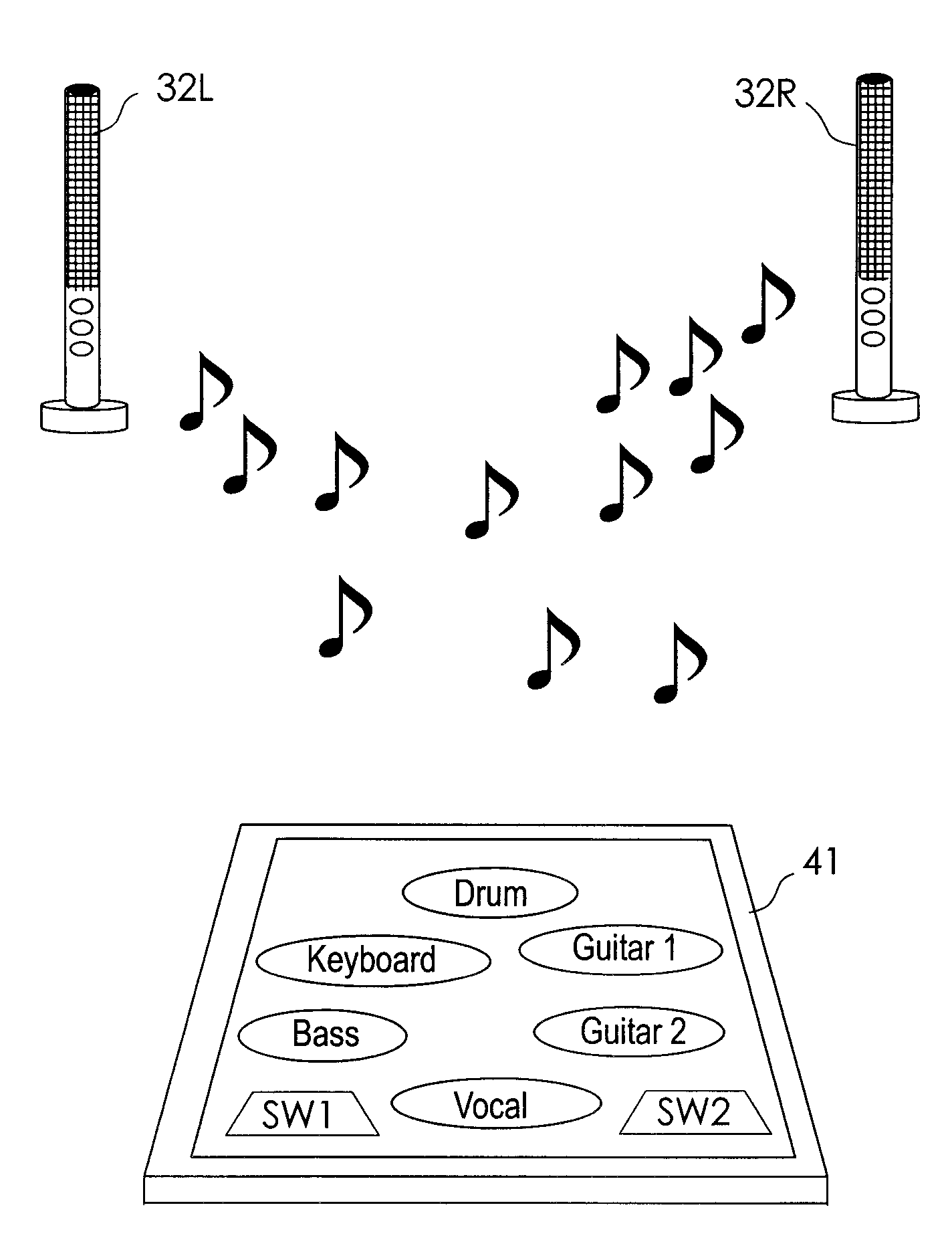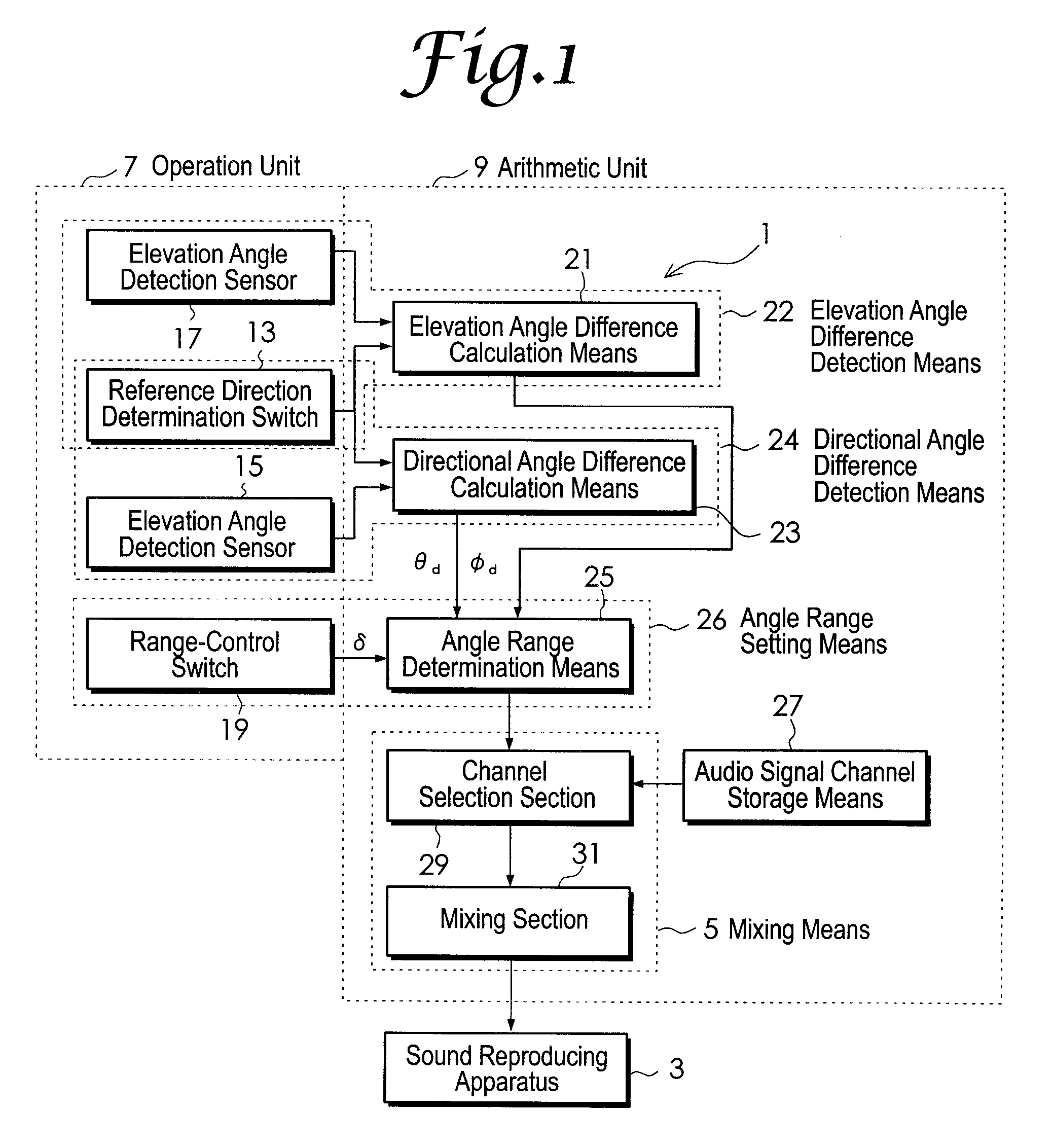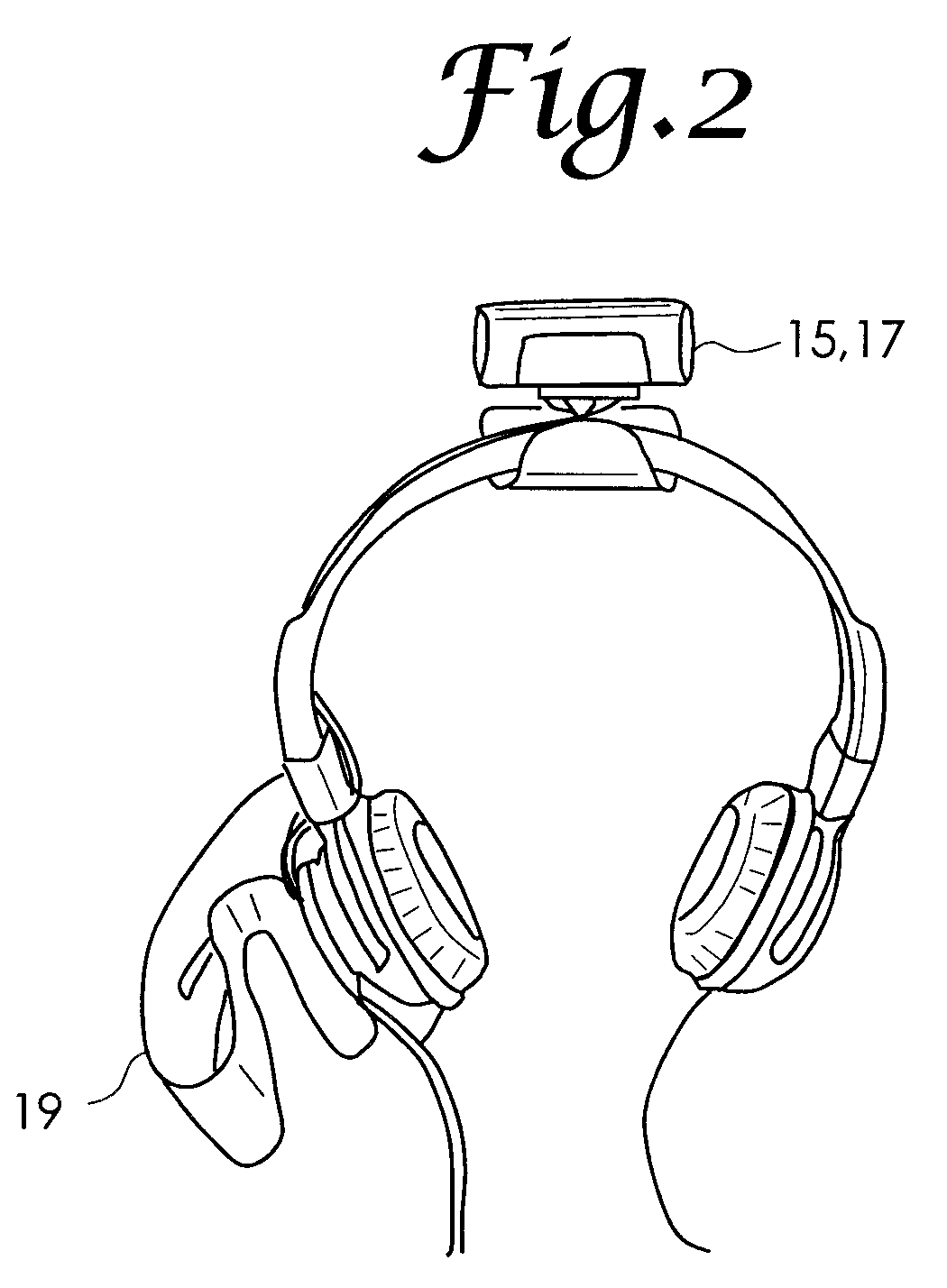Mixing device, method and program
a technology of mixing device and mixing method, applied in the field of sound mixing technology, can solve the problems of difficult adjustment for users, complicated manipulation of the music mixing system, and inability of ordinary users (listeners) to increase or decrease the sound volume of a particular part they want to hear, etc., to achieve simple manner, narrow and expand the directional angle range
- Summary
- Abstract
- Description
- Claims
- Application Information
AI Technical Summary
Benefits of technology
Problems solved by technology
Method used
Image
Examples
Embodiment Construction
[0040]Embodiments of the present invention will now be described in detail hereinbelow by referring to the accompanying drawings.
[0041]FIG. 1 is a block diagram showing an example of schematic configuration of a mixing system to implement a mixing method of the present invention. A mixing system 1 of the present embodiment includes mixing means 5 for mixing a plurality of audio signals and outputting a mixed audio signal to a sound reproducing apparatus 3 which produces a plurality of virtual sound sources around a listener. The plurality of audio signals are supplied from a plurality of audio signal channels respectively associated with the plurality of virtual sound sources. The sound reproducing apparatus 3 described here is what is called audio equipment, which is a publicly known apparatus capable of creating a plurality of virtual sound sources in a three-dimensional space around the listener. The mixing system 1 further includes an operation unit 7 operated by the listener an...
PUM
 Login to View More
Login to View More Abstract
Description
Claims
Application Information
 Login to View More
Login to View More - R&D
- Intellectual Property
- Life Sciences
- Materials
- Tech Scout
- Unparalleled Data Quality
- Higher Quality Content
- 60% Fewer Hallucinations
Browse by: Latest US Patents, China's latest patents, Technical Efficacy Thesaurus, Application Domain, Technology Topic, Popular Technical Reports.
© 2025 PatSnap. All rights reserved.Legal|Privacy policy|Modern Slavery Act Transparency Statement|Sitemap|About US| Contact US: help@patsnap.com



